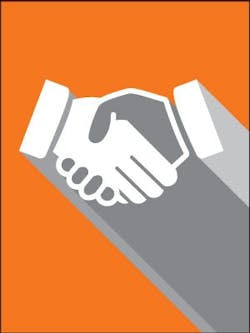13 Steps for Closing More Sales
Increasing revenue for auto repair shops isn’t about the number of estimates written; it’s about the size of those estimates and the number you close on, says John Beebe, owner of Bellingham Automotive and Burlington Automotive in Washington state. To close sales, shops need to incorporate several strategies into their customer interactions to build trust and loyalty—and entice consumers to buy.
Beebe discusses 13 techniques used by his service advisors every day that have proven to increase average repair orders and daily sales numbers.
Sales at my shop locations hit a plateau. I knew we had opportunity to grow, but we had to alter the way we were selling jobs and think about the sales process differently. We started working on new sales strategies, and my staff made several changes that increased average repair orders by 63 percent and daily sales by 23 percent within one year. My service advisors now use these strategies during customer interactions.
1. Front-load repair tickets. When customers call to make an appointment, we immediately ask them about previous repair recommendations and inquire about their desire to have the work completed. Mentioning past recommendations up front allows customers to think about their vehicle needs in advance so they’re not caught off-guard when they come to the shop.
2. Explain the value of the car. Customers often try to put off car repairs as long as possible. So explain all of the benefits associated with making the repair immediately to help customers understand it’s in their best interests to act on your recommendations. Explain how delaying the repair could ultimately prove to be more costly because it could cause additional long-term problems. Also explain how the vehicle’s performance improves when it operates at its highest potential. Also, highlight typical maintenance investments that most people make for their vehicles.
3. Ask lots of questions. Find out as much information as possible about the car and how it’s used. Ask whether it’s been making any strange noises, if the customer will be using it for travel, where they typically drive the car, and who will be the primary driver on it. That generates more personal conversations and helps shops offer better advice.
4. Refer to OEM information. Make sales recommendations based on the vehicle’s current mileage and manufacturer-recommended service intervals. Let customers know you have electronic information from the manufacturer that details various service intervals. Most people want to do the right thing for their vehicle and perceive manufacturer recommendations to be trustworthy.
5. Communicate proactively. Always make sure to communicate with customers before they call you. We always call with estimate updates within two hours after the vehicle is dropped off. If a customer brings their vehicle in at 8 a.m., we call with an estimate update by 10 a.m.
6. Get acquainted. Speak candidly with the customer to build a relationship. Try to make casual conversation to get to know them on a more personal level.
7. Explain the value of the repair. Use your warranty as a sales tool. Explain how your work is guaranteed for a certain amount of time.
8. Prioritize repairs. Prioritize repair recommendations so the customer doesn’t feel overwhelmed. If you find several items that need attention, create a list of every repair prioritized from most to least important. Explain how you can help customers work through that list over a period of time if finances are a concern.
9. Provide undivided attention. Customers should never perceive you to be distracted. Avoid taking phone calls or responding to text messages while you’re interacting with customers.
In addition, don’t let your front counter stand between you and the customer. Walk around the counter to have side-by-side conversations, and step outside to walk around the car with the customer. That shows the customer that they are important to you.
10. Show the repair. Physically show customers what’s going on with their car and turn the repair into a visual experience. That helps customers visually understand the need and urgency for repairs.
11. Ask for permission. Explain to customers that it’s common for technicians to find other unknown repair issues during vehicle inspections. You don’t want to force those repairs on the customer, but you also want them to think proactively about how they might handle those additional needs. Ask the customer: “If our technicians find any issues or concerns, would it be OK if we called you to discuss?” Asking for permission ensures customers will be prepared for that call.
12. Introduce your technicians. We introduce customers directly to the technician who will perform their repair. We introduce the technician by name and explain why that employee is qualified to work on their vehicle. That adds credibility and personality to the repair experience.
13. Help with transportation. Both of our locations are outfitted with one shuttle vehicle. We also have five loaner cars that we loan to customers for free.
All of these things are real-life, everyday items that can have a big impact on sales performance. They build consumer trust and likeability with the business, which helps close more jobs and sell more repair items.
